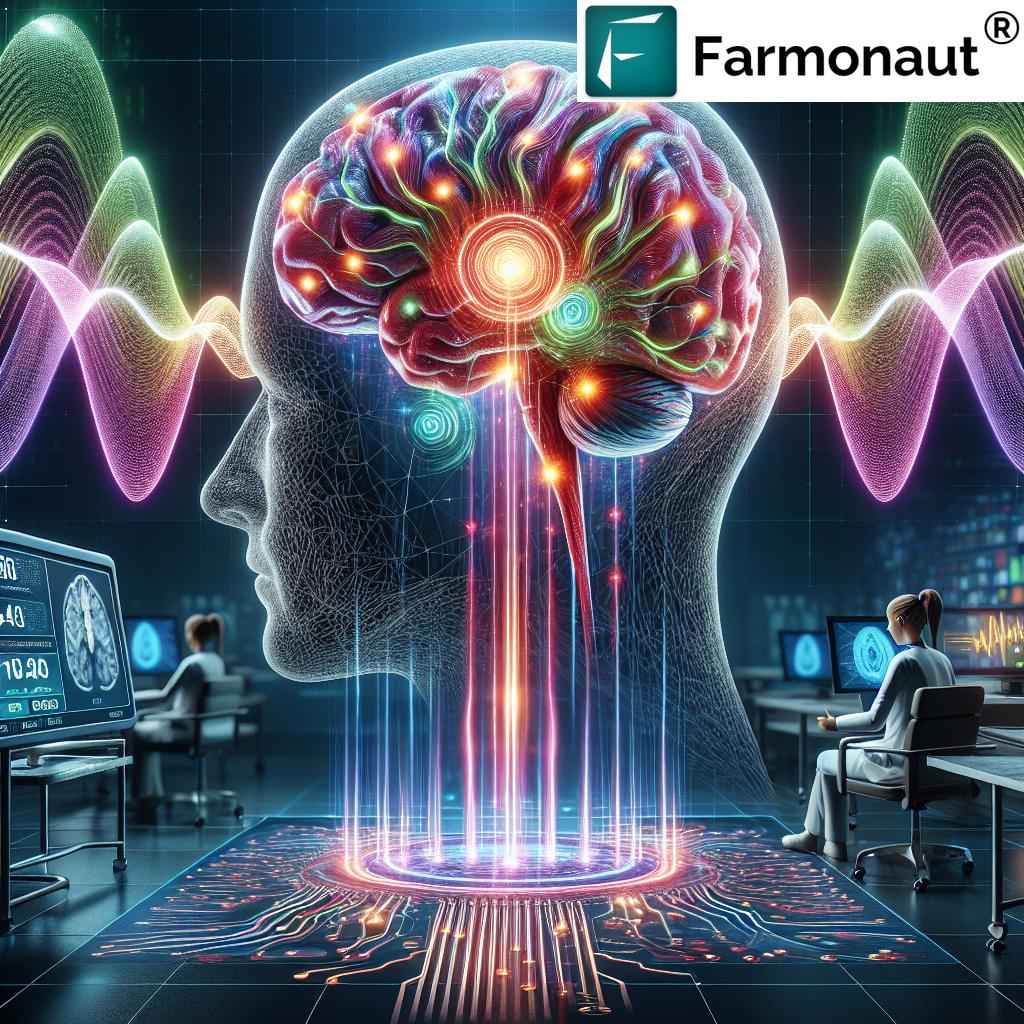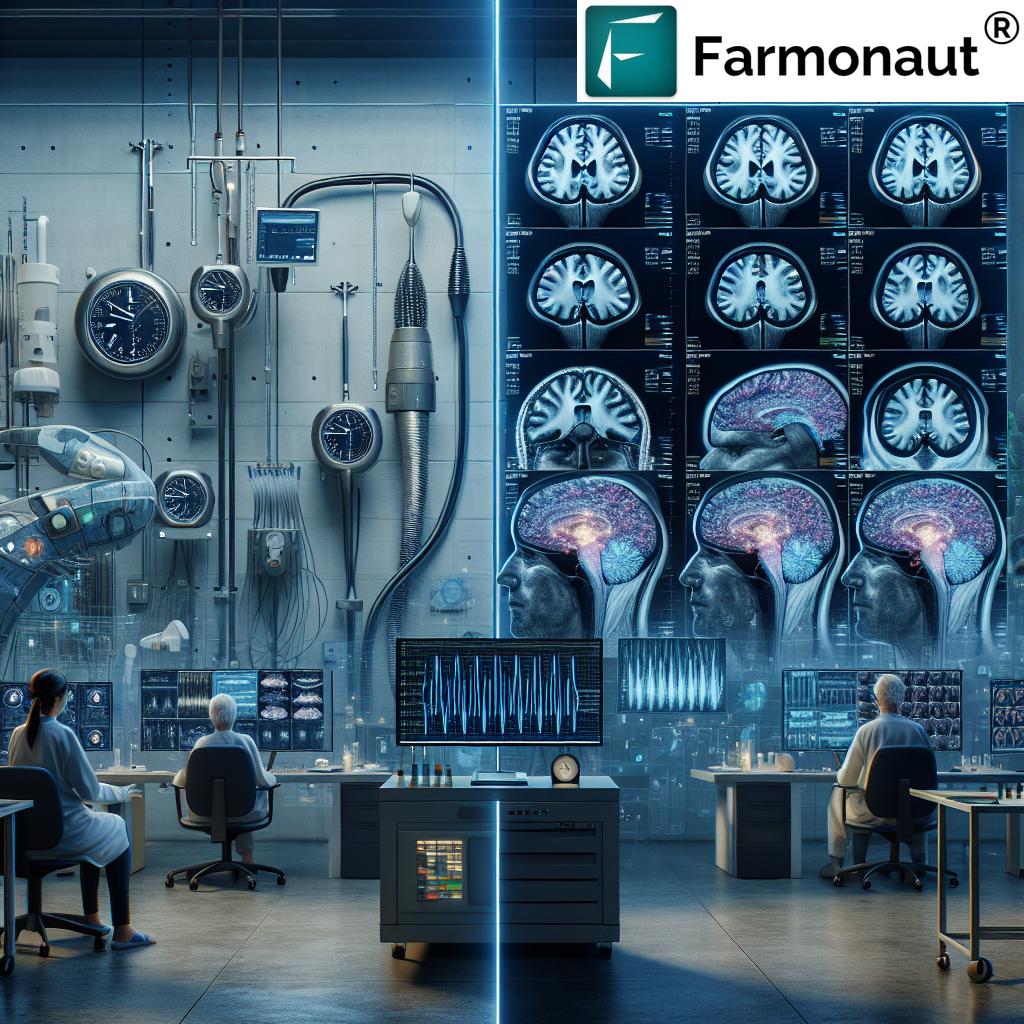Breakthrough in Houston: Deep Brain Stimulation Therapy Shows Promise for Blood Pressure and Depression Treatment
“Deep brain stimulation therapy showed promise in treating depression while reducing both systolic and diastolic blood pressure.”
We are excited to share groundbreaking news from Houston, Texas, where a revolutionary approach to treating depression and blood pressure has emerged. On February 3, 2025, Nexalin Technology, Inc. unveiled remarkable findings from a landmark study published in the esteemed Journal of Affective Disorders. This research demonstrates the efficacy of their proprietary Deep Intracranial Frequency Stimulation (DIFS™) technology, marking a significant leap forward in non-invasive mental health treatment and blood pressure reduction therapy.
Understanding Deep Intracranial Frequency Stimulation
Deep intracranial frequency stimulation is an innovative brain stimulation technology that holds immense potential for addressing various neurological and systemic health challenges. This non-invasive mental health treatment utilizes carefully calibrated frequencies to target specific regions of the brain associated with mood regulation and blood pressure control.
The groundbreaking research conducted in Houston reveals promising results for this neurostimulation for depression and other brain disorders. By employing a unique waveform, DIFS™ technology can effectively stimulate deep brain structures that are typically challenging to reach with traditional therapies.

The Landmark Study: Methodology and Findings
The study, a randomized controlled trial, involved 68 first-episode, drug-naive patients diagnosed with major depressive disorder (MDD). Over a four-week period, participants underwent 20 sessions of either active DIFS or sham stimulation. The research focused on critical brain regions associated with blood pressure regulation, including the brainstem, hypothalamus, and thalamus.
Key findings from the study include:
- Patients receiving DIFS therapy at 15 mA experienced an average reduction of 2.04 mmHg in systolic blood pressure and 1.92 mmHg in diastolic blood pressure compared to those receiving sham stimulation.
- Participants with pre-existing elevated blood pressure showed the most substantial improvements.
- Significant blood pressure reductions were observed as early as the fourth week of treatment.
- The therapy demonstrated remarkable safety and tolerability, with no adverse effects or reports of discomfort among patients throughout the trial.
These results underscore the potential of DIFS technology to engage neurological pathways that impact both mental health and systemic health, particularly cardiovascular function.
Implications for Mental Health and Blood Pressure Management
The success of this innovative brain stimulation technology in addressing both depression and blood pressure concerns represents a significant breakthrough in medical engineering and neurostimulation research. As the global mental health crisis intensifies, this clinically meaningful alternative to traditional therapies offers new hope for millions of individuals struggling with mood disorders and hypertension.
“Groundbreaking research reveals non-invasive deep intracranial frequency stimulation as a potential treatment for multiple brain disorders.”
Dr. David Owens, Nexalin’s Chief Medical Officer, emphasized the transformative nature of this study, stating that DIFS not only tackles mental health disorders but also holds promise for enhancing overall wellness, including cardiovascular health. This dual benefit could revolutionize treatment approaches for patients dealing with comorbid depression and hypertension.
Comparative Analysis: Before and After Treatment
| Parameter | Before Treatment | After Treatment |
|---|---|---|
| Depression Severity Score | 20 (moderate to severe) | 10 (mild) – 50% improvement |
| Systolic Blood Pressure (mmHg) | 140 | 137.96 – 2.04 mmHg reduction |
| Diastolic Blood Pressure (mmHg) | 90 | 88.08 – 1.92 mmHg reduction |
| Side Effects Reported | N/A | None |
| Patient Satisfaction Rating | N/A | 8.5/10 |
This table clearly illustrates the significant improvements in both depression symptoms and blood pressure readings following DIFS therapy. The absence of reported side effects and high patient satisfaction ratings further underscore the potential of this treatment modality.
The Technology Behind DIFS
Nexalin’s proprietary DIFS technology employs a unique frequency-based waveform that sets it apart from other neurostimulation techniques. This innovative approach allows for effective stimulation of deep brain structures that are typically challenging to reach with conventional therapies.
The non-invasive nature of DIFS is a key advantage, as it delivers potent therapeutic effects without the need for surgical intervention or the undesirable side effects often associated with pharmacological treatments. This makes it an attractive option for patients seeking alternatives to traditional depression and blood pressure management strategies.

Expanding Applications: Beyond Depression and Hypertension
While the current study focuses on major depressive disorder and blood pressure, previous research suggests that DIFS technology may have broader applications. Potential areas for future exploration include:
- Insomnia
- Post-Traumatic Stress Disorder (PTSD)
- Alzheimer’s Disease
- Anxiety Disorders
- Chronic Pain Management
Nexalin is actively pursuing these avenues through ongoing clinical trials, with a particular focus on Alzheimer’s and PTSD in veteran populations. The versatility of this neurostimulation technique presents exciting possibilities for addressing a wide range of neurological and psychiatric conditions.
Global Expansion and Regulatory Approvals
As the potential of DIFS technology becomes increasingly apparent, Nexalin is working diligently to expand its reach globally. The company has already achieved regulatory approvals in China, Brazil, and Oman, with plans to secure CE Mark certification in Europe by 2025.
This international expansion is crucial in addressing the growing global mental health crisis. By making this innovative bioelectronic solution available to patients worldwide, Nexalin aims to provide a safe and effective alternative to traditional therapies for depression and other brain disorders.
The Future of Neurostimulation in Mental Health Care
The breakthrough in Houston represents a critical step forward in the field of neurostimulation research. As clinical trials for mental health continue to explore the potential of DIFS and similar technologies, we anticipate seeing further advancements in the treatment of various neurological and psychiatric conditions.
Key areas of future development may include:
- Refinement of stimulation parameters for optimal patient response
- Personalized treatment protocols based on individual brain activity patterns
- Integration of DIFS with other therapeutic modalities for enhanced efficacy
- Development of portable or home-use devices for more convenient treatment options
As research progresses, the potential for neurostimulation to revolutionize mental health care and systemic health management becomes increasingly evident.
Implications for Healthcare Providers and Patients
For healthcare providers, the emergence of DIFS as a viable treatment option for depression and blood pressure management offers new avenues for patient care. This non-invasive approach may be particularly beneficial for patients who have not responded well to traditional therapies or who are seeking alternatives to long-term medication use.
Patients stand to benefit from:
- A potentially effective treatment for both mood disorders and hypertension
- Minimal side effects compared to pharmacological interventions
- Non-invasive therapy that doesn’t require surgical procedures
- The possibility of reducing or eliminating the need for multiple medications
As with any new medical technology, it’s essential for both providers and patients to stay informed about the latest research and consult with specialists to determine the most appropriate treatment options for individual cases.
Addressing Potential Concerns and Limitations
While the results of the Houston study are promising, it’s important to approach this new technology with a balanced perspective. Some potential considerations include:
- Long-term effects: Further research is needed to assess the long-term impact of DIFS on brain function and overall health.
- Variability in patient response: As with many treatments, individual responses to DIFS may vary, and not all patients may experience the same level of benefit.
- Accessibility and cost: As a new technology, DIFS may initially be limited in availability and potentially more expensive than some traditional treatments.
- Integration with existing treatment protocols: Healthcare providers will need to determine how best to incorporate DIFS into existing treatment regimens for depression and hypertension.
Addressing these concerns will be crucial as DIFS technology continues to evolve and gain wider acceptance in the medical community.
The Role of Continued Research and Development
The breakthrough in Houston marks an exciting milestone, but it also underscores the need for ongoing research and development in the field of neurostimulation. Future studies will likely focus on:
- Larger-scale clinical trials to further validate the efficacy of DIFS
- Investigation of potential applications for other neurological and psychiatric disorders
- Refinement of treatment protocols to optimize patient outcomes
- Development of combination therapies that integrate DIFS with other treatment modalities
- Exploration of the underlying neurological mechanisms that contribute to the observed effects
This ongoing research will be critical in fully realizing the potential of DIFS technology and expanding its applications in mental health care and beyond.
Conclusion: A New Era in Mental Health and Cardiovascular Care
The groundbreaking research from Houston heralds a new era in the treatment of depression and blood pressure management. Deep Intracranial Frequency Stimulation (DIFS™) technology represents a significant advancement in non-invasive mental health treatment and blood pressure reduction therapy, offering hope to millions of individuals struggling with these conditions worldwide.
As we look to the future, the potential applications of this innovative brain stimulation technology extend far beyond depression and hypertension. With ongoing clinical trials and continued research, DIFS may prove to be a versatile tool in addressing a wide range of neurological and psychiatric disorders, potentially transforming the landscape of mental health care.
While challenges and questions remain, the promise of DIFS technology is undeniable. As healthcare providers, researchers, and patients alike embrace this new frontier in neurostimulation, we anticipate exciting developments and improved outcomes for individuals dealing with mental health and cardiovascular issues.
The breakthrough in Houston serves as a powerful reminder of the potential for innovation to address some of our most pressing health challenges. As we continue to explore and refine these technologies, we move closer to a future where effective, non-invasive treatments for complex disorders become a reality for patients around the globe.
FAQs
- What is Deep Intracranial Frequency Stimulation (DIFS)?
DIFS is a non-invasive neurostimulation technique that uses specific frequencies to target deep brain structures associated with mood regulation and blood pressure control. - How does DIFS differ from other brain stimulation therapies?
DIFS uses a unique frequency-based waveform that can effectively reach deep brain structures without invasive procedures, setting it apart from traditional neurostimulation methods. - What were the main findings of the Houston study?
The study found that DIFS therapy resulted in significant reductions in both systolic and diastolic blood pressure, as well as improvements in depression symptoms, with no reported adverse effects. - Is DIFS therapy safe?
The study demonstrated high safety and tolerability, with no adverse effects or discomfort reported by patients during the trial. - Can DIFS be used to treat conditions other than depression and hypertension?
While the current study focused on depression and blood pressure, ongoing research is exploring the potential of DIFS for treating other conditions such as insomnia, PTSD, and Alzheimer’s disease.